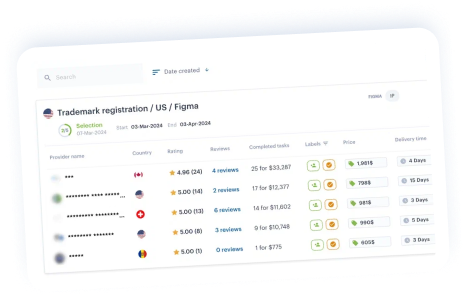Australia’s robust patent system offers exclusive rights to inventors, enabling them to commercialize their innovations and gain a competitive advantage in the market. With over 30,000 patent applications filed in Australia each year, it’s evident that individuals and businesses recognize the importance of securing legal protection for their inventions.
This article provides a comprehensive guide to patent registration in Australia, highlighting the significance of intellectual property rights in the country’s thriving innovation landscape.
Contents
1. What is a patent for an invention?
2. What can and cannot be patented in Australia?
3. What documents are required to register a patent in Australia?
4. Patent registration procedure in Australia
5. The cost of patent registration in Australia
6. The peculiarity of patent registration in Australia
What is a patent for an invention?
A patent protects any device, substance, method or process that’s new, inventive and useful.
A patent can cover a broad range of inventions, including:
- Medical technology
- Pharmaceuticals
- Biotech
- Organic chemistry
- Civil engineering
- Appliances
- Mechanical devices.
In certain circumstances, patents can also be granted for computer-related inventions, biological inventions and microorganisms. In more limited circumstances, business methods may also qualify.
A patent can be owned by:
- the inventor(s),
- the person who has legally obtained rights to the invention from the inventor(s) or an intermediary,
- a company, organization or other employer of someone who made the invention in the course of their normal duties.
What can and cannot be patented in Australia?
In order to be granted a patent, applicant will need to make sure that invention is:
- New — it must be novel,
- Useful — it can be made or used in an industry,
- Inventive — it’s different enough to what already exists,
- A suitable subject matter, known as ‘manner of manufacture’.
The following can’t be patented:
- Human beings or the biological process for their generation,
- Artistic creations,
- Mathematical models,
- Plans, schemes or other purely mental processes.
Learn more about patent registration in our comprehensive guide
What documents are required to register a patent in Australia?
To register a patent in Australia, you’ll need to file the following documents:
- Ownership and inventor details: applicants’ name and address, the name and address of co-applicants (including postal address),
- Contact details of an Australian or New Zealand agent,
- Prepared specification that describes the invention in detail, formatted in line with the requirements,
- Payment details,
- A certified copy of the Priority Document (required on request of the Australian Patent Office or a third party),
- Power of Attorney (required on request of the Australian Patent Office),
- An Assignment Deed from the inventor to the applicant (required on request of the Australian Patent Office).
The official language of an Australian patent application is English. If an application is filed in a language other than English, it is highly recommended to submit an English translation at the time of filing. However, late filing of an English translation is possible within two months from the notification.
Patent registration procedure in Australia
First, the application is checked for compliance with the formal requirements of the patent office. For example, it may be the availability of documents or the payment of official fees. If the application passes all the formal requirements, it’s published in the official gazette.
Publication of a patent means that the invention becomes public knowledge, and the contents of application aren’t confidential anymore. Applications that have not yet been published will be automatically laid-open in the official gazette after 18 months from the filing date.
Applicants have up to five years from filing date to request examination and pay the associated fee. If it’s been close to five years since the applicant applied there are two additional months to request examination. If the applicant doesn’t request an examination or fails to pay the fee, the application will lapse.
Usually, it takes around 12 months to examine an application from the date requested for the examination. In some circumstances, applicants can request a speedier examination of application. If there are any issues raised during the examination, the applicant has 12 months to resolve them. If the applicant can’t overcome them, the application will lapse.
If there are no issues with application, it will progress to the ‘acceptance’ step. If the application doesn’t meet the requirements, it will send a report explaining the issues. In some cases, you may be able to fix your application. Applicants won’t need to pay a fee to make amendments that have been requested by the Australian Patent Office.
The Australian Patent Office publishes a notice of acceptance in the Australian Journal of Patents (AOJP). Third parties will then have three months to oppose the granting of application. If the patent isn’t opposed, or if it overcomes opposition, the Australian Patent Office grants it and updates its status in the Australian Official Journal of Patents (AOJP).
First renewal is due four years after the filing date. All following renewals must occur yearly until the patent ends.
The cost of patent registration in Australia
| Provisional patent application | $110 |
| Standard patent application | $370 |
| Examination request | $490 |
| Amend standard patent specification before examination | $250 |
| Standard patent acceptance (mandatory) | $250 |
| If the specification contains up to 20 claims at acceptance (mandatory) | $250 |
| If the specification contains 21 to 30 claims at acceptance | $125 per claim |
| If the specification contains 31 or more claims at acceptance | $250 per claim |
| Standard patent renewal fees (online services) | |
| 4th anniversary | $300 |
| 5th anniversary | $315 |
| 6th anniversary | $335 |
| 7th anniversary | $360 |
| 8th anniversary | $390 |
| 9th anniversary | $425 |
| 10th anniversary | $490 |
| 11th anniversary | $585 |
| 12th anniversary | $710 |
| 13th anniversary | $865 |
| 14th anniversary | $1050 |
| 15th anniversary | $1280 |
| 16th anniversary | $1555 |
| 17th anniversary | $1875 |
| 18th anniversary | $2240 |
| 19th anniversary | $2650 |
The patent registration cost in Australia via the iPNOTE platform starts from as low as $1,702, which includes all government fees as well as document preparation. Find the best patent agent in Australia on iPNOTE.
The peculiarity of patent registration in Australia
- The granting of a patent provides 20 years’ protection for standard patents or 25 years for pharmaceutical patents from the filing date, provided that renewal fees are paid.
- The term for filing an application for an Australian patent claiming conventional priority is 12 months from the priority date. The time limit for entering the Australian national phase of a PCT application is 31 months from the priority date.
- There are two types of patent applications:
- A provisional application, used for provisional patents, gives the earliest possible priority date and signals your intention to lodge a complete application in the near future. A provisional application doesn’t provide any IP protection.
- A complete application, used for standard patents, starts the formal process to have the patent granted.
- Utility model protection is not available under Australian legislation.
Final thoughts
By securing a patent in Australia, inventors can assert their exclusive rights over their inventions, giving them the confidence and legal foundation to commercialize their ideas. As we’ve explored in this article, the process of patent registration involves several key steps, including eligibility assessment, filing an application, and navigating the examination and granting process. It’s crucial for innovators to understand the intricacies of patent law and work with professional advisors to ensure a smooth and successful registration process.
***
The iPNOTE platform features more than 700 IP law firms that cover more than 150 countries, so you can always find the right direct service provider using our flexible filtering system.
Look at our directory of patent attorneys in Australia.
Sign up for free, and we’ll help you solve any IP-related problem.
Looking for expert assistance in trademark registration? Our trademark registration agency offers top-notch services. Additionally, explore our software patent registration services for comprehensive protection of your innovative software creations.







